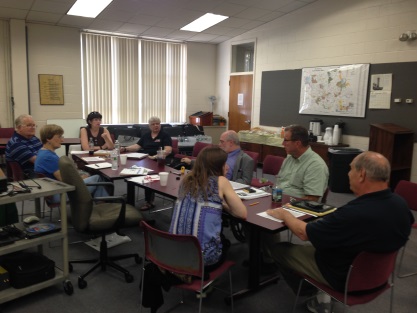Step 1 - Start Implementation
Each public entity must formulate an approach that best suits itself and the community it serves. There is no one approach to compliance.
Commitment by the public entity's senior political and executive leadership is essential and can be expressed in a variety of ways. A well-publicized public declaration of support or adoption of a formal policy statement can set a positive tone that facilitates staff involvement and promotes support and cooperation.
Most public entities start by appointing an ADA Coordinator and putting together an ADA team. Here are how two public entities, a state and a city, approached the self-evaluation and compliance process.
Examples of Implementation Methods
| State of Rhode Island | City of Austin, Texas | |
|---|---|---|
| ADA Coordinator | Director, Governor’s Commission on Disabilities | Staff member, Human Resources Department and Human Rights Commission |
| ADA Team | High-ranking representatives from all three branches of state government--executive, legislative, and judicial. | Representatives from city departments and disability organizations in the community. |
| ADA Self-Evaluation Process |
1. Coordinating committee formed ten working groups (public safety, etc.). 2. Department liaison conducted review and brought results to committee or committee conducted review. 3. Developed common findings and solutions. 4. Submitted committee reports to coordinating committee. 5. Final report signed by all agency heads and governor with pledges to implement. |
1. Disability awareness training held for task force. 2. Each department assigned one or two staff members as department ADA coordinators to work with citywide coordinator. 3.Task force reviewed regulations, identified preliminary issues and developed review plan. 4. Program accessibility targeted. Citywide ADA coordinator worked with the Department of Public Works-assigned coordinator to conduct surveys of all facilities. 5. Citywide ADA coordinator met with each department coordinators and staff to review programs, policies, and practices. |
ADA Team
A team approach is key to achieving successful compliance for several reasons. First, the self-evaluation and transition plan require collecting information from all programs, services, and activities of the entity. This is too large a task for one person. Second, the transition plan and self-evaluation require varied expertise and specialized skills.
One of the important aspects of putting together a team is to identify the various players needed for this effort. The following criteria should be considered:
Representation of all departments
Each department or other major organizational unit should designate a liaison to participate in overall planning and decision making, collect information regarding his or her department's policies and practices, inform staff within the department of ADA requirements, and serve as contact person for the public within that department.
Special skills and expertise
Including staff and/or external parties with skills and expertise in the following areas will be very helpful to the team:
-
finance and budgeting
-
capital planning
-
facilities management
-
employment
-
contracts and purchasing
-
public works
-
communication accessibility
Involvement of people with disabilities
There are several reasons to include people with disabilities. First, the regulation requires that public entities provide an opportunity for people with disabilities and other interested individuals or organizations to review and comment on the self-evaluation and transition plan. Second, involving the end users in the process will generate solutions that are creative and effective. Third, involving people with disabilities in decision-making will strengthen the accountability of the process and ensure wise use of limited public resources. The team should include representation of as wide a range of disabilities as possible. People with physical, visual, hearing, speech, intellectual, learning, behavioral health, and other disabilities may be included on the team.
ADA Training
Learning about the ADA, both the purpose and requirements, is critical. Participants should include staff, board members, committee chairs and others involved in running the public entity. Some public entities hold on-site trainings and invite the public. Here are a few training possibilities:
The ten ADA Centers and their state affiliates provide training on every aspect of the ADA.
Web-based, free, covers the basic principles and core concepts in the five titles of the ADA. A project of the ADA National Network and sponsored by the Southeast ADA Center.
Web-based, free, covers the basic principles and core concepts of title II. A project of the ADA National Network and sponsored by the Southeast ADA Center.
ADA Title I Employment Requirements
Web-based, free, covers title I employment. A project of the ADA National Network and sponsored by the New England ADA Center.
Annual Mid-Atlantic ADA Update Conference
The region's leading 3-day conference, featuring speakers from federal agencies such as the U.S. Departments of Justice and Transportation, Equal Employment Opportunity Commission, and the Access Board. Sponsored by the Mid-Atlantic ADA Center.
Four day event includes more than seventy breakout sessions on every aspect of the ADA. It is a project of the ADA National Network and is organized and run by the Great Plains ADA Center.


User Comments/Questions
Add Comment/Question